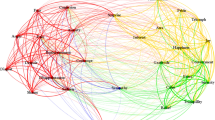Abstract
In this paper, a case is made for the term “non-ego disturbance” to replace LFT and discomfort disturbance as the generic alternative to ego disturbance in REBT theory. The issues of valence and varying levels of non-disturbance are introduced and discussed and an initial version of a taxonomy of non-ego disturbance is presented. Finally, a plea is made for the development of a scale to measure non-ego disturbance.
Similar content being viewed by others
REFERENCES
Beck, A.T. (1976). Cognitive therapy and the emotional disorders. New York: International Universities Press.
Bond, F.W., & Dryden, W. (1996). Modifying irrational control and certainty beliefs: Clinical recommendations based upon research. In W. Dryden (Ed.), Research in counselling and psychotherapy: Practical applications (pp. 162–183). London: Sage.
Brehm, S.S., & Brehm, J.W. (1981). Psychological reactance: A theory of freedom and control. New York: Academic Press.
Clarkson, P. (1989). Gestalt counselling in action. London: Sage.
Dryden, W. (1996). Overcoming anger: when anger helps and when it hurts. London: Sheldon.
Ellis, A. (1976). The biological basis of human irrationality. Journal of Individual Psychology, 32, 145–168.
Ellis, A. (1979). Discomfort anxiety: A new cognitive behavioral construct. Part 1. Rational Living, 14(2), 3–8.
Ellis, A. (1980). Discomfort anxiety: A new cognitive behavioral construct. Part 2. Rational Living, 15(1), 25–30.
Ellis, A. (1994). Reason and emotion in psychotherapy: A comprehensive method of treating human disturbances. Revised and updated. New York: Birch Lane Press.
Hauck, P. (1979). Depression: Why it happens and how to overcome it. London: Sheldon.
Kushner, H. (1982). When bad things happen to good people. London: Pan.
Lerner, M. J. (1980). The belief in a just world: A fundamental delusion. New York: Plenum.
Maultsby, M.C., Jr. (1975). Help yourself to happiness: Through rational self-counseling. New York: Institute for Rational Living.
Phares, E.J. (1984). Introduction to personality. Columbus, OH: Charles E. Merrill Publishing Company.
Raimy, V. (1975). Misunderstandings of the self: Cognitive psychotherapy and the misconception hypothesis. San Francisco: Jossey-Bass.
Rothschild, B.H. (1993). RET and chronic pain. In W. Dryden & Larry K. Hill (Eds.), Innovations in rational-emotive therapy. (pp. 91–115). Newbury Park, CA: Sage.
Walen, S.R. (1982). Phrenophobia. Cognitive Therapy and Research, 6, 399–408.
Wessler, R.A., & Wessler, R.L. (1980). The principles and practice of rational-emotive therapy. San Francisco: Jossey-Bass.
Author information
Authors and Affiliations
Corresponding author
Rights and permissions
About this article
Cite this article
Dryden, W. Beyond LFT and Discomfort Disturbance: The Case for the Term “Non-Ego Disturbance”. Journal of Rational-Emotive & Cognitive-Behavior Therapy 17, 165–200 (1999). https://doi.org/10.1023/A:1023062311270
Issue Date:
DOI: https://doi.org/10.1023/A:1023062311270




